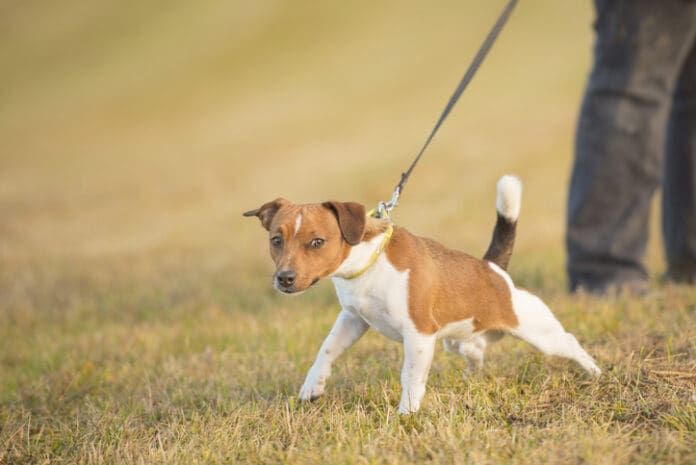When I was about 5 years old, my family moved from the suburbs to a home in the country, and a couple years later, my parents bought my 13-year-old sister a horse—despite knowing nothing about horses themselves. Dusty was fast, spirited, and loved to run. He was also not much more than just lightly trained, and he became locally famous (and infamous in my extended family of dozens of visiting “city cousins”) for running away with his novice riders.
My sister was able to ride Dusty successfully, but it took me years to be able to ride him away from our property without walking home on my own two feet; at some point in every ride, he’d get impatient with my fearful, tight grip on his reins and say, “To heck with this, I’m headed home!” He’d shove his head down (against the pain of the bit in his mouth) and just take off running, headed for home. Only the very best riders could manage to stay on him during his high-speed dashes through orchards and across roads back to our barn.
Now, if you were a confident, balanced rider, Dusty was the most fun horse in the world to ride. He’d go anywhere you pointed him, could turn or spin on a dime, and was super fast; he loved to run and won many a match race against the larger horses owned by other kids in our rural farming community. But riding him successfully was all about keeping the reins loose and letting him run occasionally; if you held the reins in your hands with a frightened death grip and tried to keep him at a walk or trot the whole ride, pretty soon he’d (figuratively) say, “Nope! I’m out of here!” and take off into a run, headed for home.
Eventually, over the course of five or six years, I learned to stick like a bur on Dusty’s back, whether he was saddled or I was riding bareback, no matter how fast he ran. And I learned how to win races: By tightening the reins a little and yelling in a panicked, high voice, “Whoa Dusty! Whoa! Whoa!!!” When he heard those magic words, he’d put his ears back and run like the wind. Fifty years later I still laugh out loud at the memory of what we kid riders inadvertently taught our little spitfire racehorse: that he could run the fastest when he heard those words.
What’s this got to do with dogs?
When I see someone whose dog is pulling hard against a tight leash, I often think to myself, “Whoa Dusty, whoa!” Sometimes, the dog and their person have both become habituated to a nearly constant battle of wills and strength, resulting in walks that are not fun for either one. And while the owner will fixate on the dog’s pulling, identifying this as the major problem in the dog’s training, the fact is, the owner is pulling even harder! It’s necessary, they will say, to keep the dog from doing whatever it is that the dog wants to do—which is anything but being with the owner!
Most dog owners in this situation buy a pinch or shock collar or a harness that tightens or gives them a mechanical advantage in the pulling competition—or they hire a trainer who takes this tack with their dog. The dog is forced to comply, but looks unhappy and is still outwardly focused, not paying any attention to his handler. The owners in this common scenario may have “won” the battle but they lose the war, because walking the dog requires them to inflict pain on the tuned-out dog—no fun for either dog or handler.
The fix for this is not simple; it generally requires a number of changes to how the owner handles the dog. A good trainer will teach the owner how to get, reward, and keep their dog’s attention and cooperation. If the dog is reactive to other dogs, the trainer can teach the owner how to teach the dog how to disengage his attention from them and be rewarded for, instead, staying connected to his handler. Most owners need to be taught to let the dog have some moments of sheer doggie enjoyment from the walk in exchange for their cooperation. And above all, a good trainer will bring the owner’s attention to how she handles the leash and get her to stop pulling!
In retrospect, I’m glad that my parents didn’t have money to throw at the problem of our runaway horse; they never hired an abusive trainer or bought harsher bits for Dusty’s bridle, to force him through pain into compliance with a slow ride. My sister (and eventually I, too) had to figure out on our own how to ride Dusty in a way that suited him—by not pulling on the reins constantly, and by giving him some opportunities to have the kind of fun he wanted in an outing. The result is that we no longer got left in Dusty’s dust as he ran home.







Your “whoa, Dusty, whoa!” story reminded me of an anecdote told by Ian Dunbar in a dog training class. He said that he trained his dogs to bark/growl/lunge on the leash when he said “Easy, dog, easy!” That way he could make unwanted solicitors at his door believe that he had no control over vicious dogs. I thought that was brilliant!
I’ve often thought of this with those highly trained dogs that walk loose leash at their owners side but never have the opportunity to stop and smell the scents left along their urban or rural walks. How awful for them to know there are wonderful smells there but they can’t stop and smell them. There needs to be a balance between obedience, compliance and freedom. My dogs do start a walk with pulling out of cheerful enthusiasm but soon stop and walk gently by my side because they remember that I will stop at trees, bushes and hydrants and let them get some good, enjoyable sniffs before we continue on. After all, I’m not going anywhere urgent. I have to agenda or destination in mind. It’s just a walk, for them and for me. If I want to exercise I can go to a gym. I don’t need to make my dogs comply to my exercise routine.